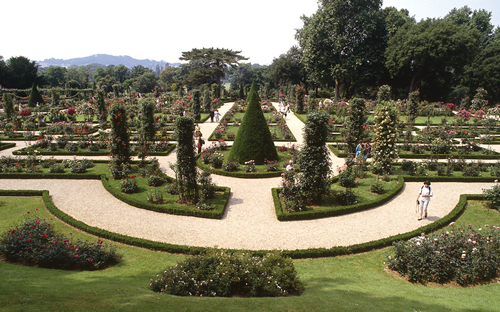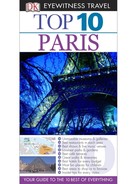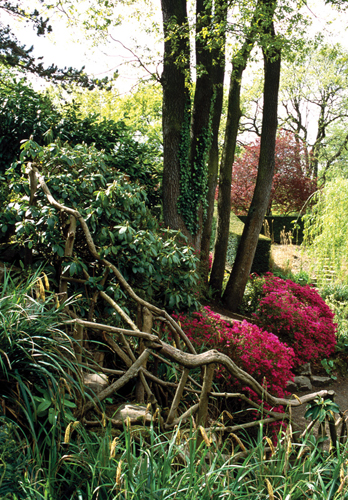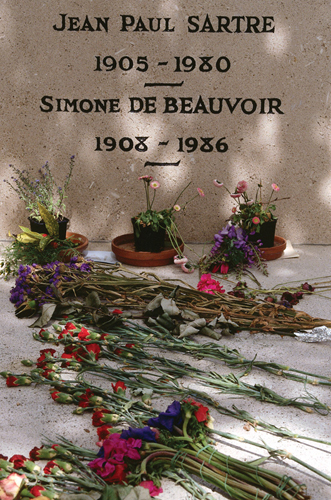Greater Paris
Central Paris has more than enough on offer to keep any visitor occupied, but if time permits you should make at least one foray out of the centre, whether your interest is in the sumptuous Palace of Versailles, former home of the “Sun King” Louis XIV, or in the Magic Kingdom of Disneyland Paris. The excellent metro system makes for easy day trips to the area’s two main parks, the Bois de Boulogne and the Bois de Vincennes, for a wide range of outdoor activities, from boating to riding or in-line skating, or just strolling amid pleasant greenery. In contrast to these bucolic pleasures is the cutting-edge modern architecture of La Défense. Visually stunning, it comprises Paris’s stylish new business district to the west of the city, with added attractions in its exhibition centres. Two large cemeteries outside the centre are worth a visit for their ornate tombs.
The Treaty of VersaillesFrance, Great Britain, the USA, Italy and the German Republic negotiated this agreement after World War I at Versailles, which required Germany to demilitarize parts of its territory, reduce the size of its army, abolish conscription, cease trading in military equipment and to pay compensation. The Treaty was signed on 28 June 1919. |

|
NOTE
Versailles
The top day-trip from Paris has to be Versailles. This stunning chateau, begun by Louis XIV in 1664, is overwhelming in its opulence and scale. Plan carefully what you want to see as even a full day may not be long enough. Much of the palace is only accessible on a guided tour, so arrive early as on sunny days the queues can be long (see Versailles).
Versailles 78000
RER line C to Versailles-Rive Gauche
Open Apr–Oct: 9am–6:30pm Tue–Sun; Nov–Mar: 9am– 5:30pm Tue–Sun (gardens open daily)
Admission charge
Versailles
Disneyland Resort Paris
Visitors with children will probably have no choice about whether they visit the Paris branch of Disneyland or not. However, even parents will enjoy the hi-tech workings and imagination behind such attractions as “Pirates of the Caribbean” and “The Haunted House” (see Disneyland Resort Paris). The new Walt Disney Studios Park involves visitors interactively through film, with a professional stunt show at the end and special effects rides.
Marne-la-Vallée
RER line A to Marne-la-Vallée Chessy/Disneyland
Open Sep–Jun: 9am–8pm daily; Jul–Aug: 9am–11pm daily (Studios Sep–Jun: 9am–6pm daily; Jul–Aug 9am–8pm daily); times vary for Walt Disney Studios Park
Admission charge
La Défense
French vision and flair coupled with Parisian style are clearly shown by this modern urban development. This new business and government centre was purposely built to the west of the city to allow the centre to remain unmarred by skyscrapers. More than just offices, however, the area is also an attraction in its own right, with stunning sights such as the Grande Arche, a cube-like structure with a centre large enough to contain Notre-Dame, and surrounded by artworks, a fountain, cafés and restaurants.
Metro Esplanade de la Défense or RER line A to Grande-Arche-de-la-Défense
Grande Arche, La Défense
Bois de Vincennes
Southeast of the city lies the Bois de Vincennes, which has several lakes, boating facilities, lovely formal gardens, a Buddhist centre and a summer amusement park. The Château de Vincennes was a royal residence before Versailles and has the tallest keep in Europe. The more energetic can walk here all the way from the Bastille along the Promenade Plantée, formerly a railway viaduct.
Vincennes, 94300
Metro Château de Vincennes/ RER Vincennes
Park: open dawn–dusk daily; château: Sep–Apr 10am–5pm; May–Aug 10am–6pm
Closed public hols

Bois de Boulogne
This enormous park is the Parisians’ favourite green retreat, especially on summer weekends when its 865 ha (2,135 acres) can become crowded. There is plenty to do, apart from simply walking and picnicking, such as cycling, riding, boating or visiting the various attractions. These include parks within the park, two race courses (see Bois de Boulogne) and an art and folk museum. The park is open 24 hours a day, but avoid after dark.
Bois de Boulogne
Parc de la Villette
More than just a park, this landscape was created in 1993 to a futuristic design. It provides the usual park features of paths and gardens, but modern sculptures, zany park benches and several major hi-tech attractions offer a different edge. These include the interactive science museum, the Cité des Sciences et de l’Industrie, a 60-seater mobile hydraulic cinema, an Omnimax cinema, play areas for younger children and a music institute (see Parc de la Villette).
30 ave Corentin-Cariou, 75019
Metro Porte de Pantin
01 40 03 75 75
Opening times vary depending on the attraction
Admission charge
Parc de la Villette
Montparnasse
Montparnasse’s location is highly visible due to the 209-m (685-ft) Tour du Montparnasse which offers spectacular views. Five minutes’ walk away is the area’s main draw, the Cimetière du Montparnasse, where the great writers Maupassant, Sartre, de Beauvoir, Baudelaire and Samuel Beckett are buried. For breathtaking views of Paris by night visit the rooftop restaurant “Le Ciel de Paris.”
Metro Gare Montparnasse
Tour du Montparnasse
open 9:30am–11:30pm daily (winter until 10:30pm Sun–Thu)
admission charge
Cemetery
open 8:30am–5:30pm daily
free

Cimetière du Père Lachaise
This is the most visited cemetery in the world, largely due to rock fans who come from around the world to see the grave of the legendary singer Jim Morrison of The Doors. There are about one million other graves here, in some 70,000 different tombs, including those of Chopin, Oscar Wilde, Balzac, Edith Piaf, Colette, Molière and Delacroix (see Graves). There are maps posted around the cemetery to enable you to find these notable resting places, or a more detailed plan can be bought at the kiosks around the grounds.
16 rue du Repos
Metro Père-Lachaise
Open 8am–5:30pm Mon–Sat, 9am–5:30pm Sun, but phone to check
01 55 25 82 10
Free
Cimetière Père-Lachaise
Parc Monceau
This civilized little park is no further from the city centre than Montmartre, yet it goes unnoticed by many visitors. It was created in 1778 by the Duc de Chartres and is still frequented by well-heeled residents. The grounds are full of statues and an air of well-being (see Parc Monceau).
Blvd de Courcelles, 75008
Metro Monceau
Parc Monceau
Musée Marmottan-Claude Monet
Paul Marmottan was an art historian and his 19th-century mansion now houses the world’s largest collection of works by Claude Monet (see Blue Waterlilies), including his Impression Soleil Levant which gave the Impressionist movement its name. The collection was donated by the artist’s son in 1971, and includes the artist’s collection of works by Renoir and Gauguin.
2 rue Louis-Boilly, 75016
Metro Muette
Open 10am–6pm Tue–Sun
Admission charge
A Taste of Greater Paris
Morning
You won’t cover Greater Paris in a day, and Disneyland Resort Paris and Versailles both need at least a day.
If you want variety, go to Montparnasse by métro. In front of the busy mainline station, is the Tour Montparnasse – take a trip to the top to admire the view and then enjoy a coffee break in the Panoramic Bar.
When you leave, walk down boulevard Edgar Quinet. On your right is the entrance to the Cimetière du Montparnasse. An hour should be plenty of time here.
Walk towards the Vavin metro station to the historic café/brasserie La Coupole , to have lunch.
Afternoon
Take the metro at Vavin, changing at Réaumur-Sébastopol, to Cimetière du Père Lachaise and explore the city’s other great cemetery. Spend one or two hours searching out the famous names buried here and admiring the architecture of the monuments. Have a coffee afterwards at a neighbourhood café, Le Saint Amour (
2 ave Gambetta01 47 97 20 15Metro Père-Lachaise).
From Père-Lachaise it is again just one change on the metro, at Nation, to the Bois de Vincennes, where you can spend the late afternoon in the park and admire the château.
Versailles Sights
Chapelle Royale
The Royal Chapel is regarded as one of the finest Baroque buildings in the country. Finished in 1710, the elegant, white marble Corinthian columns and numerous murals make for an awe-inspiring place of prayer.
L’Opéra
The opulent opera house was built in 1770 for the marriage of the dauphin, the future Louis XVI, to Marie-Antoinette. The floors were designed so that they could be raised to stage level during special festivals.
Le Trianon
In the southeast corner of the gardens Louis XIV and Louis XV had the Grand and Petit Trianon palaces built as “private” retreats. Marie-Antoinette was given Petit Trianon by Louis XVI.
Stables of the King
The magnificent stables have been restored and they now house the famous Zingaro equine training academy.
|
Bois de Boulogne Features
Parc de Bagatelle
Differing garden styles feature in this park, including English and Japanese, though the major attraction is the huge rose garden, best seen in June.
Pré Catelan Park
This park-within-a-park is at the very centre of the Bois. Its lawns and wooded areas include a magnificent 200-year-old beech tree and the idyllic, eponymous restaurant (see Le Pré Catelan).
Jardin d’Acclimatation
The main children’s area of the Bois incorporates a small amusement park, a zoo with a farm and a pets’ corner, and a Herb Museum aimed especially at children Jardin d’Acclimatation.

Musée en Herbe
This small museum aims to introduce children to art via regular, changing exhibitions. There is an admission charge.
Stade Roland Garros
The legendary home of French clay-court tennis hosts the glamorous French Open each year in June.
Château de Longchamp
At the same time as he redesigned central Paris (see The Second Empire), Baron Haussmann landscaped the Bois de Boulogne. This chateau was given to him as a thank-you from Napoleon III.
Jardin des Serres d’Auteuil
This 19th-century garden has a series of greenhouses where ornamental hothouse plants are grown. In the centre is a palm house with tropical plants.
Horse-Racing
The Bois is home to two race courses. To the west is the Hippodrome de Longchamp, where flat racing takes place including the Prix de l’Arc de Triomphe; in the east, the Hippodrome d’Auteuil holds steeplechases.
Graves

Fredéric Chopin, Père Lachaise Cemetery
The Polish composer was born in 1810 but died in Paris at the age of 39. The statue on his tomb represents “the genius of music sunk in grief”.
Edith Piaf, Père Lachaise Cemetery
The “little sparrow” was born in poverty in the Belleville district of Paris in 1915, less than 1,500 m (5,000 ft) from where she was buried in 1963 in a simple black tomb (see Edith Piaf).
Marcel Proust, Père Lachaise Cemetery
The ultimate chronicler of Paris, the writer was born in the city in 1871. He is buried in the family tomb (see A la Recherche du Temps Perdu).
Samuel Beckett, Montparnasse Cemetery
The Irish-born Nobel prize-winning writer settled in Paris in 1937, having previously studied here. He died in 1989 and his gravestone is a simple slab, reflecting the writer’s enigmatic nature (see Samuel Beckett).
Guy de Maupassant, Montparnasse Cemetery
The great French novelist and short-story writer died in Paris in 1893, and his grave with its luxuriant growth of shrubs stands out because of the open book carving (see Bel-Ami).
Places to Eat
Le Pré Catelan
Tucked away in the Bois de Boulogne is this high-class dining pavilion. Romantic setting and elegant service.
Route de Suresnes, Bois de Boulogne, 75016
Metro Porte Maillot
01 44 14 41 14
Gordon Ramsay au Trianon
Celebrity chef Gordon Ramsay has won two Michelin stars for his restaurant, which opened in 2008.
Hôtel Palais Trianon
1 blvd de la Reine, Versailles
RER line C to Versailles
01 30 84 55 56
Closed Sun–Mon & Aug
Marée de Versailles
Versailles may be a long way from the sea, but this restaurant serves the freshest seasonal catch. Its terrace is the perfect place for oysters and white wine.
22 rue au Pain, Versailles
RER line C to Versailles
01 30 21 73 73
Closed Sun pm–Mon
La Coupole
Near the Cimetière de Montparnasse is this Parisian landmark. Eclectic menu features dishes such as Welsh rarebit.
102 blvd du Montparnasse, 75014
01 43 20 14 20

La Closerie des Lilas
With its piano bar and terrace, this is a Montparnasse institution. The brasserie is cheaper and steaks are good.
171 blvd du Montparnasse, 75006
01 40 51 34 50
La Gare
If visiting the Bois de Boulogne, include La Gare on the itinerary. This stylish brasserie in a former railway station has a summer terrace.
19 chaussée de la Muette, 75016
Metro La Muette
01 42 15 15 31
Ma Pomme en Colimaçon
Handy for supper after a visit to Père Lachaise. The food is first class, from ostrich and fish dishes to pastas and salads.
107 rue de Ménilmontant, 75020
Metro Gambetta
01 40 33 10 40
Closed Sat L, Sun, Mon L
L’Echappée
Atmospheric neighbourhood bistro just north of Père Lachaise serving earthy, classic dishes and organic wines.
38 rue Boyer, 75020
Metro Gambetta
01 47 97 44 58
Open Wed–Fri L, Tue–Sun D
Relais d’Auteuil
At the southern end of the Bois de Boulogne is this gourmet restaurant. Sea bass in a pepper crust is just one delicious speciality.
31 blvd Murat, 75016
Metro Michel-Ange-Molitor
01 46 51 09 54
Open Mon–Sat L, Tue–Fri D, Sat D
|
















